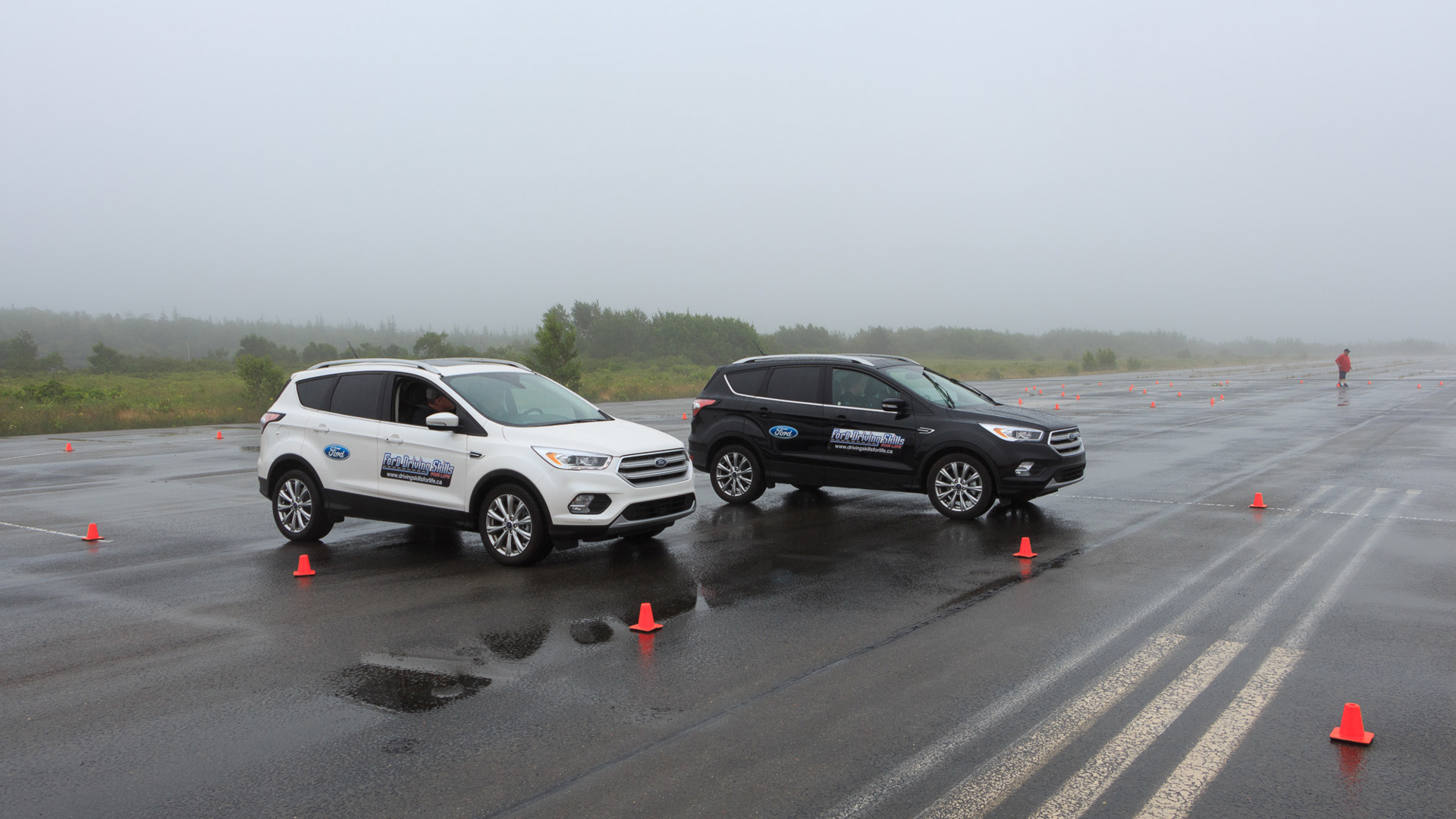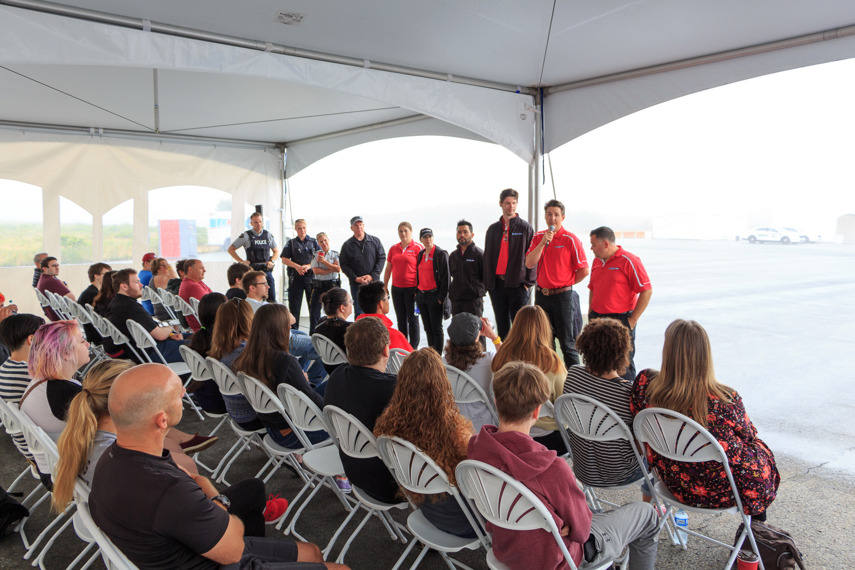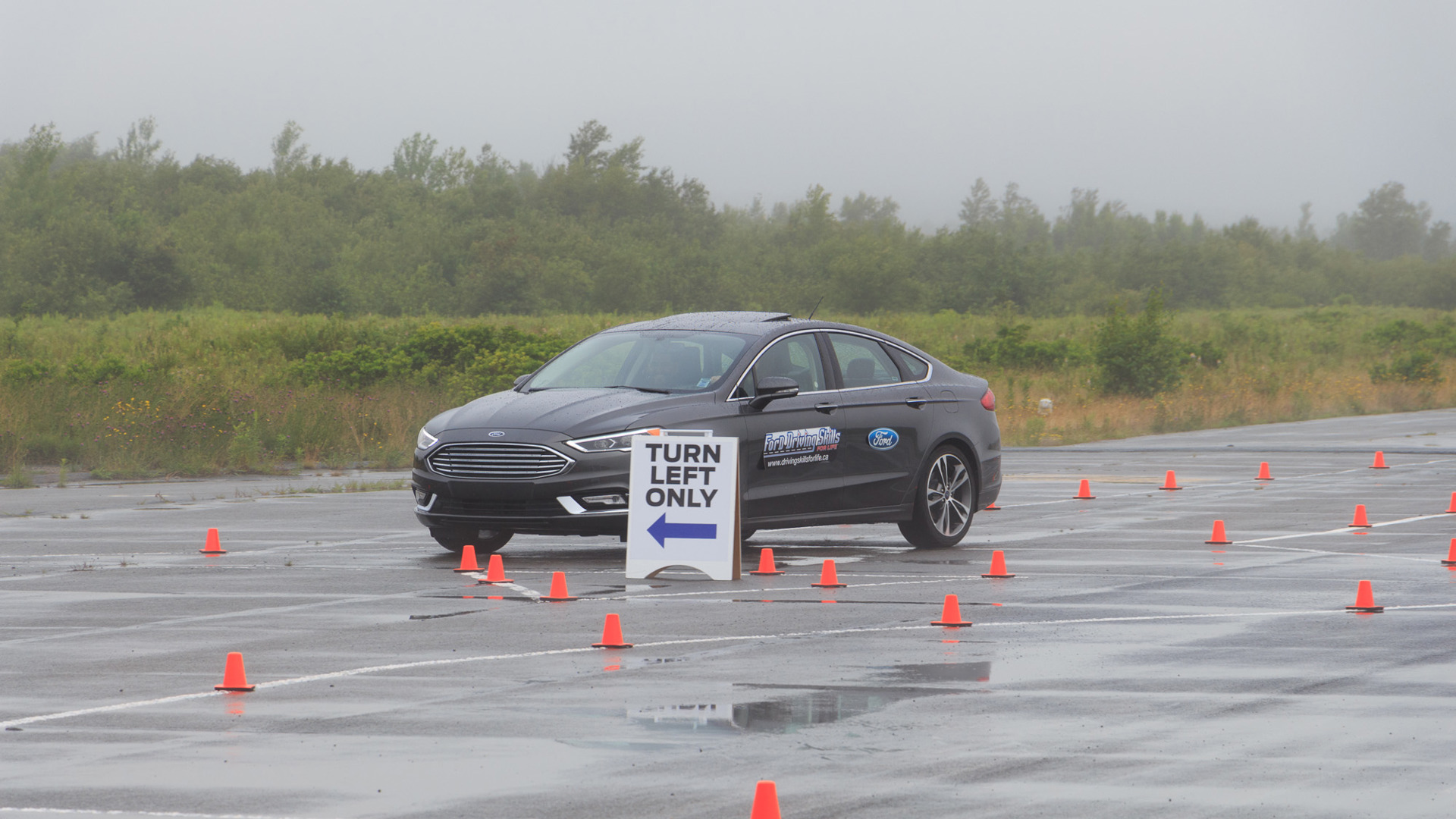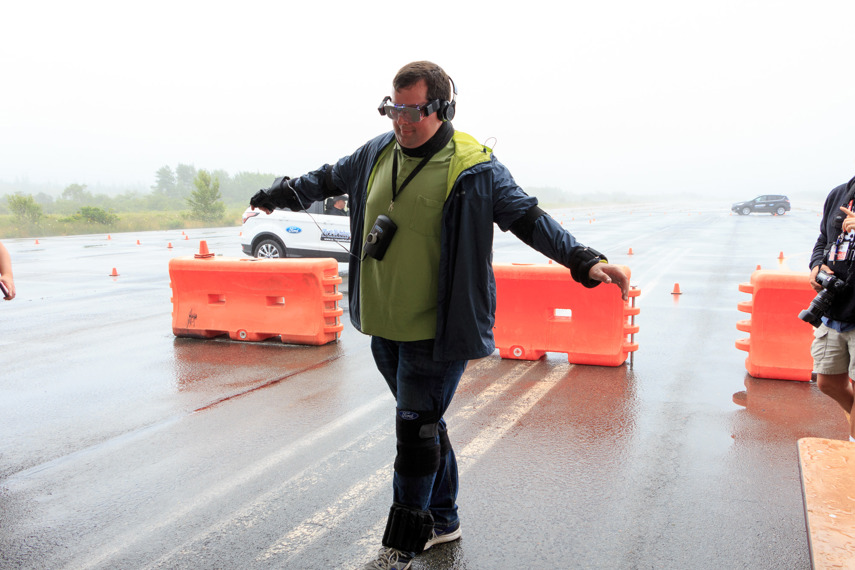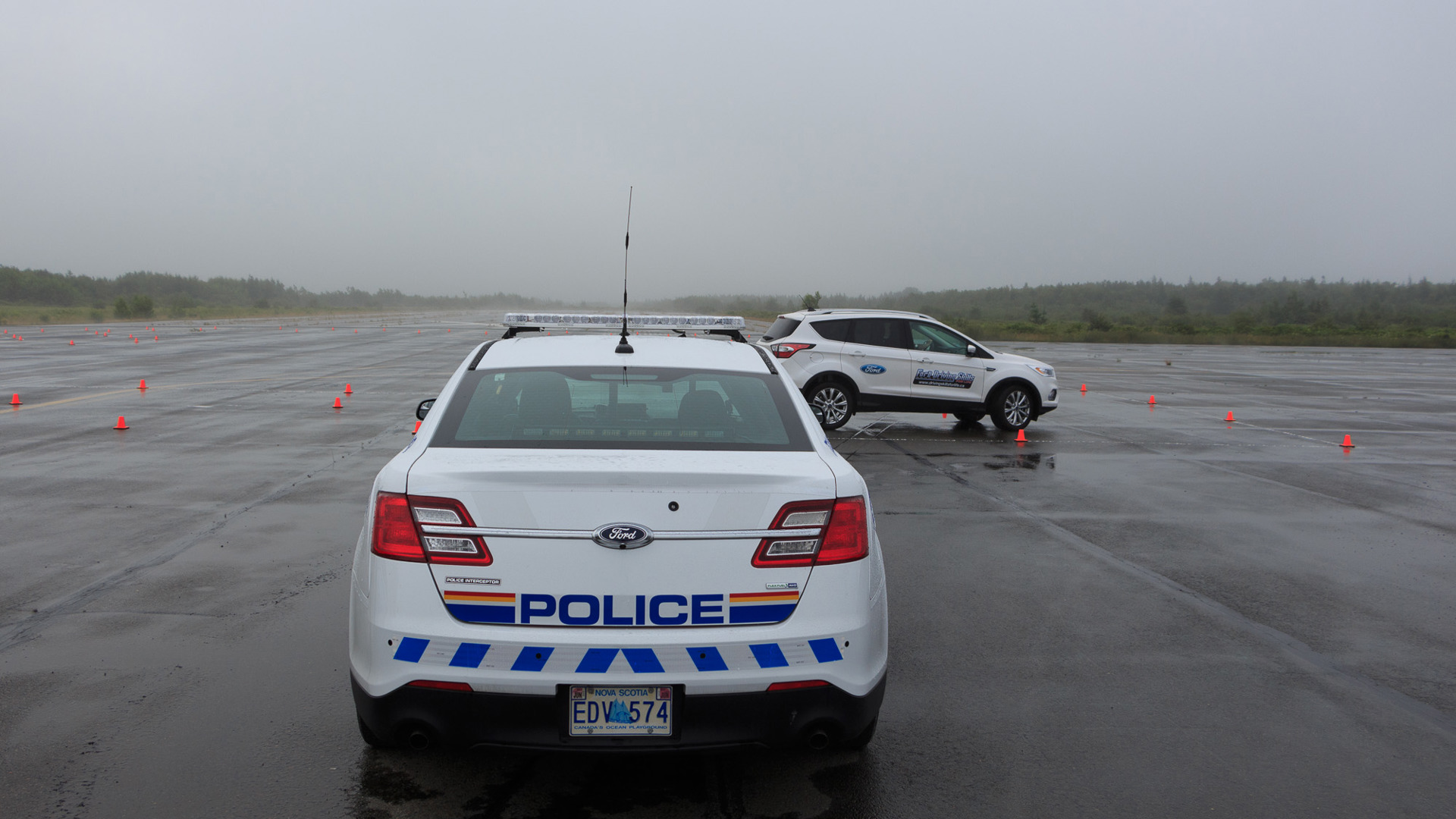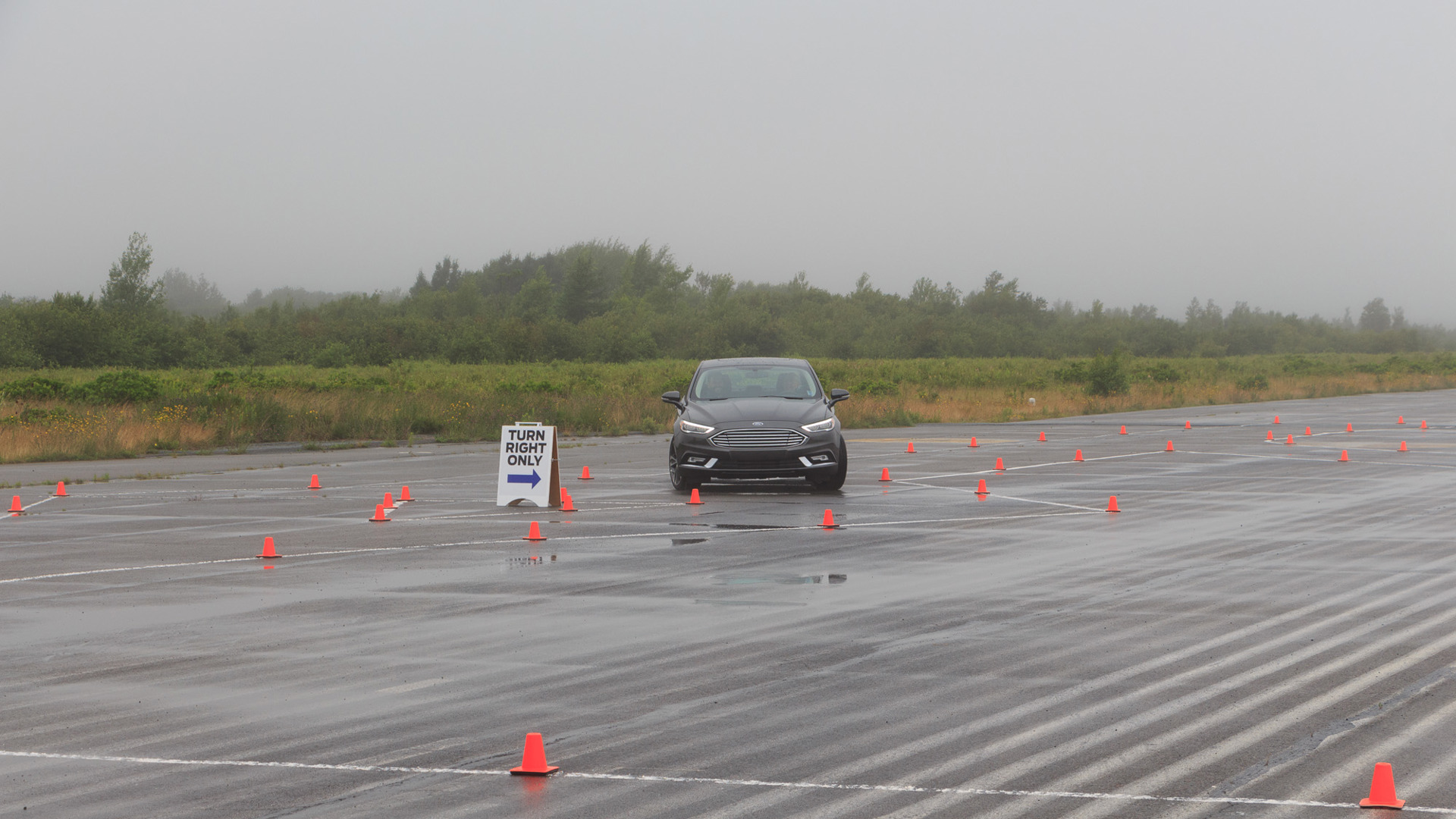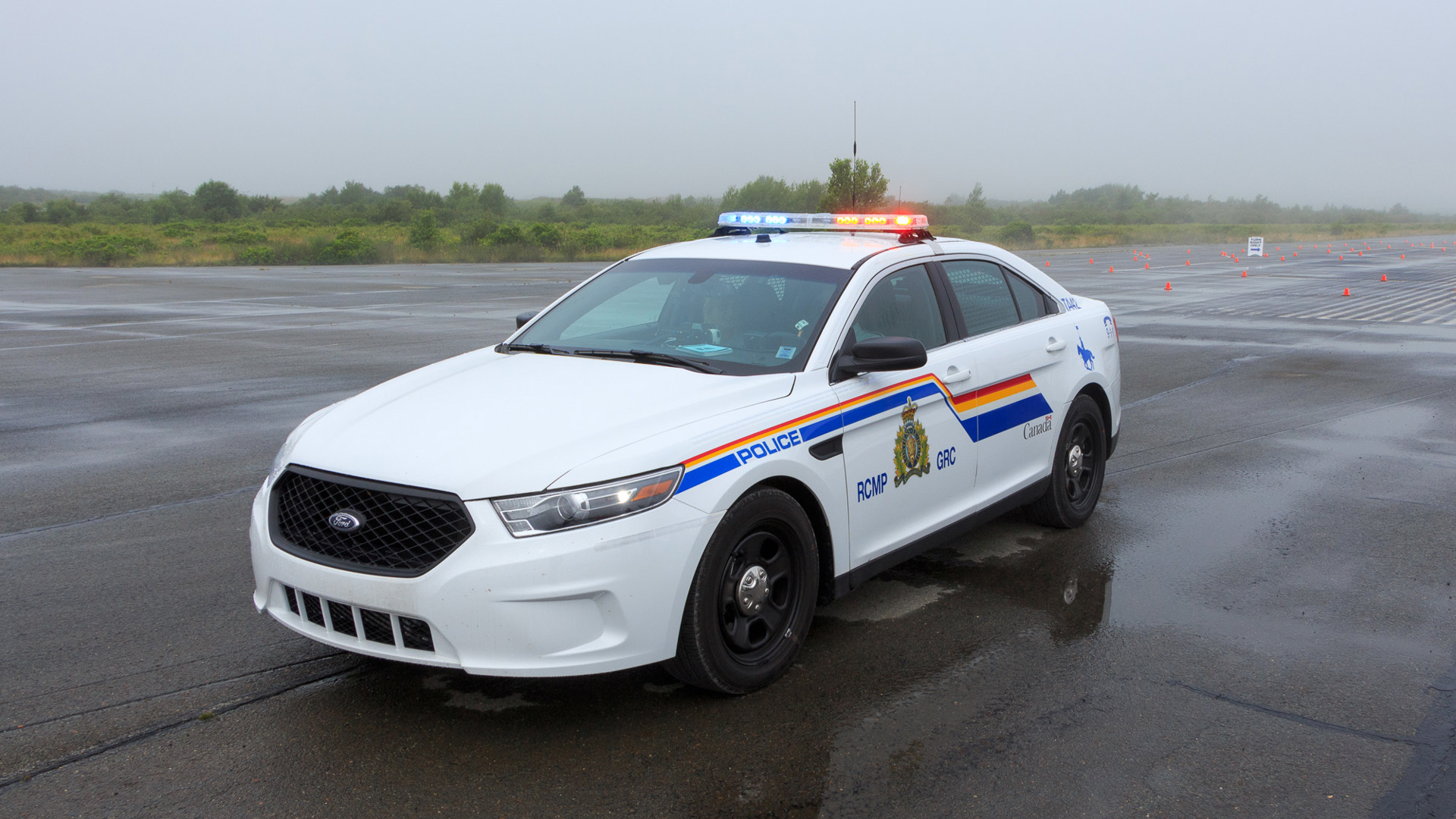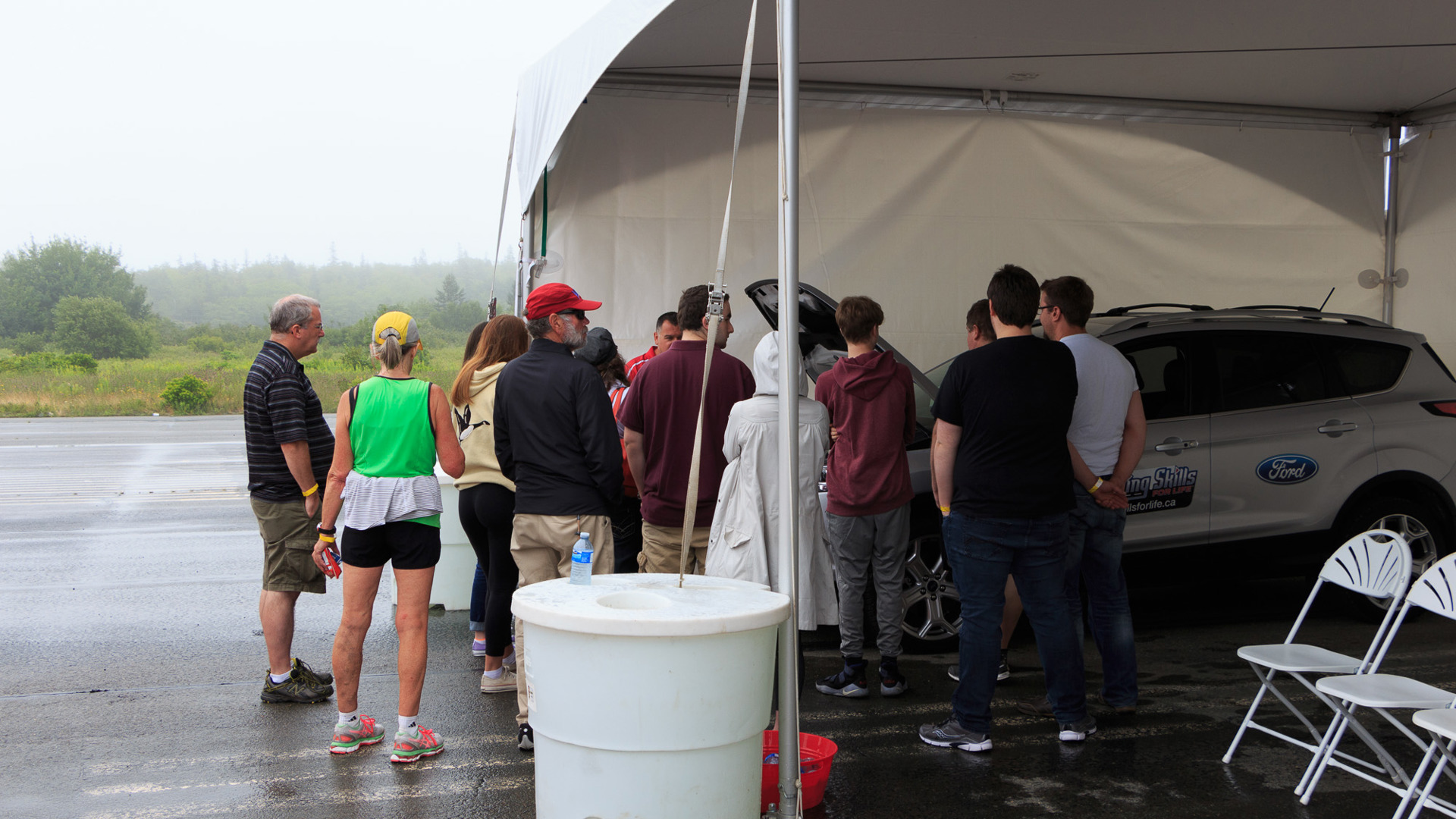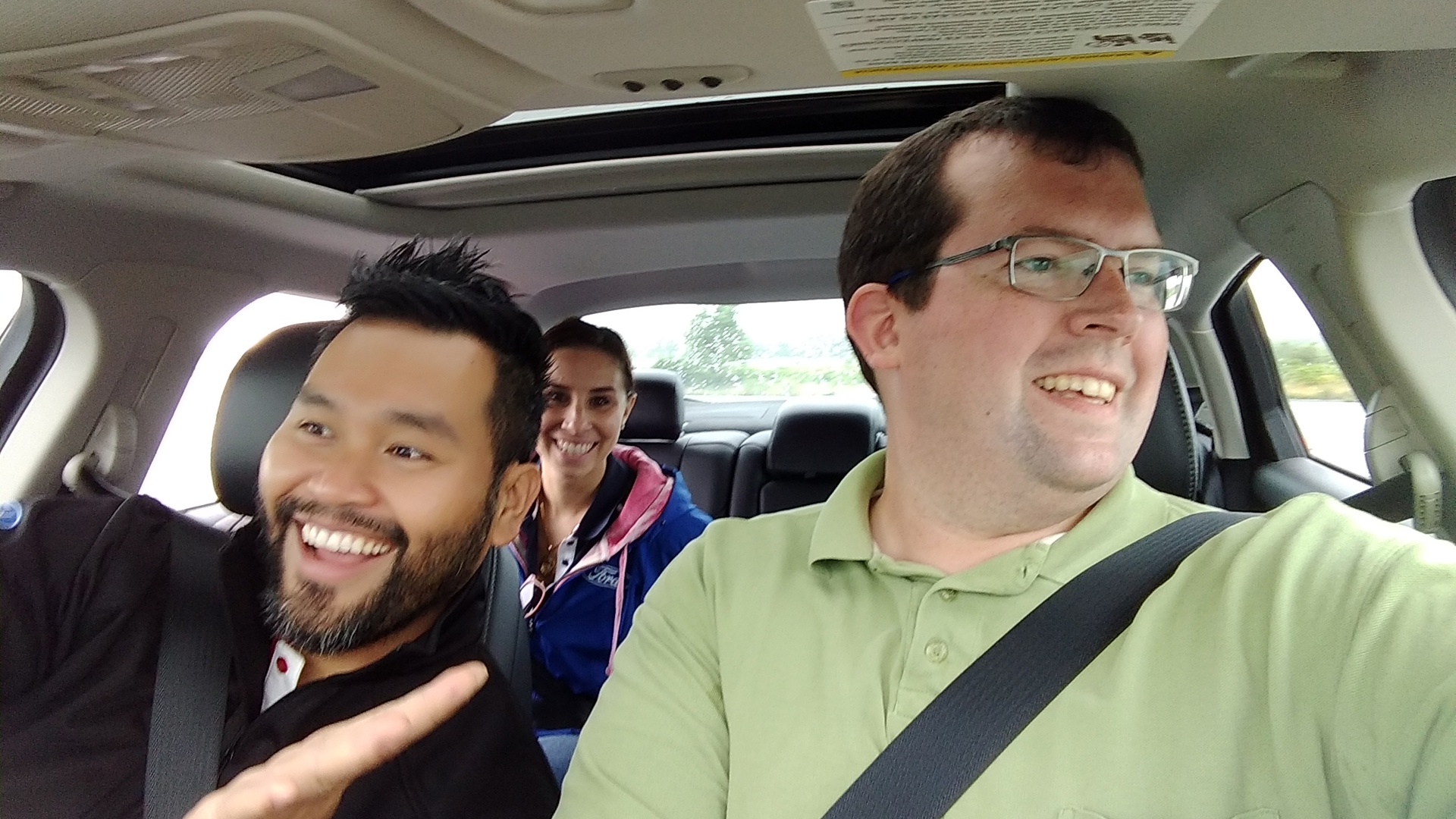It’s a cold and rainy Saturday morning, and I’m standing on a runway staring at a sea of cones. Only this time, instead of chasing faster times, I’m here to watch some young drivers learn hands-on just how dangerous it is to drive while distracted or while impaired.
Motor vehicle collisions are one of the leading causes of death for young Canadians. The main things that lead to crashes for teen drivers are impaired driving and distracted driving – issues that aren’t always adequately dealt with by conventional driver education. In 2003, Ford launched its Driving Skills for Life program, with a mandate to show young drivers around the world how dangerous distraction, drugs, and alcohol are, giving them skills to help them avoid becoming just another road safety statistic.
It’s one thing to talk about how distracted and impaired driving are dangerous. We’ve all heard it before, to the point that it can become easy to ignore. As newly licensed 16-year-olds, we all know better than our parents and our instructors anyway, right? Probably not, but that doesn’t stop us from thinking it.
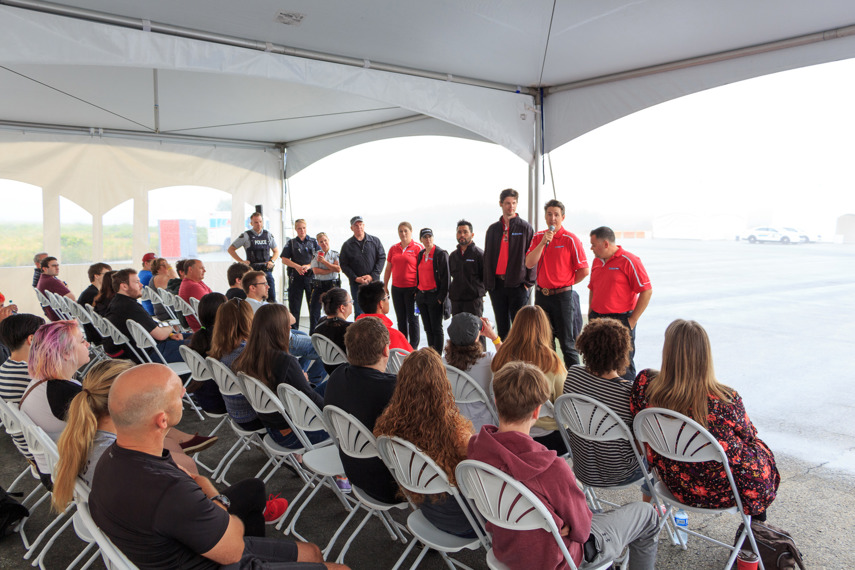
So Ford has developed a program that adds some show to the tell. Put young drivers in the car and then add distraction and (simulated) impairment. Let them learn firsthand just how dangerous it can be, and how quickly things can sneak up on you. After 15 years and 40 countries, including five years in Canada, the program has shown more than one million young drivers (and their parents) the dangers of driving while distracted or impaired.
The program today is divided up into two sections. The one covers impaired driving, the other distracted. On-hand to talk about impaired driving are members of Halifax Regional Police as well as the RCMP.
I start out sitting in a Ford Escape, to drive a short course laid out in cones. I’m told to drive the course while maintaining the speed I choose and not to hit anything. No problem. Now I have to put on a pair of Fatal Vision goggles. They’re designed to simulate the visual effects of alcohol consumption. I’m wearing the stronger of the two pairs, designed to simulate a blood alcohol content of between 0.12 and 0.15. Nearly double the legal limit. The effect of the goggles is staggering. I feel completely disoriented, and there is no way I’d normally get anywhere near a vehicle feeling this way.
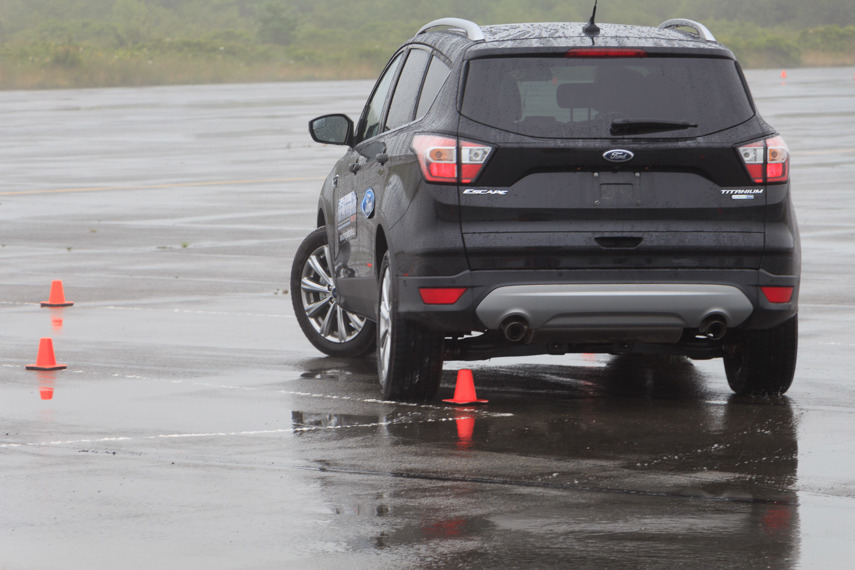
I get the same instructions. Drive the course, maintain the same speed I did the first time. My first thought is that I should have gone more slowly the first time.
I make it through the course just fine. In my head, at least. In reality, I was rarely in my lane, I hit multiple cones, and my speed was erratic. On a real road, I would have been well into the ditch multiple times. And have smashed more than a few mailboxes. It’s not just me, though. I watch the young drivers taking their turns, running over pylons and crossing lanes like they didn’t exist.
It’s the looks on their faces when the young drivers get out that really tells the tale. Disbelief, incredulity, shock. Most of the drivers here aren’t yet old enough to have a drink, but they’re now familiar with what will happen if they drink and get behind the wheel. Hopefully the feelings will stay fresh in their minds.
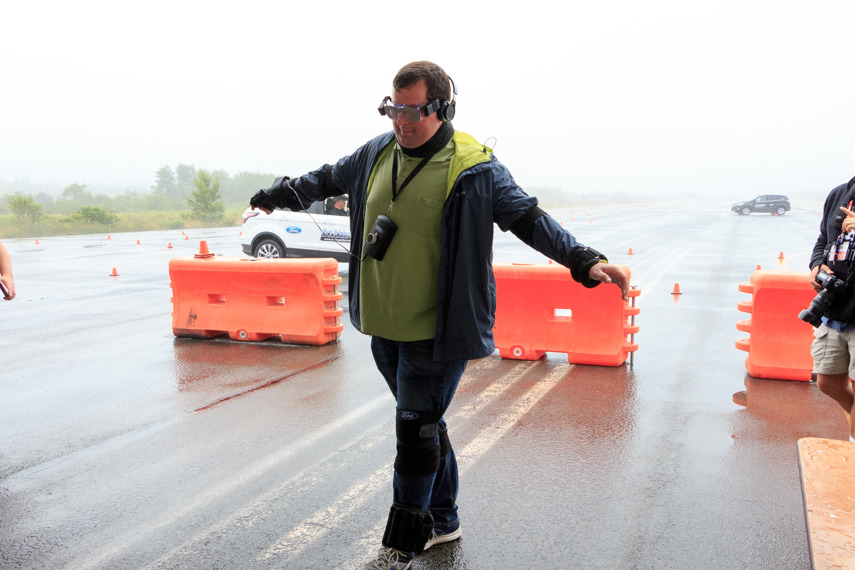
Next up is a drugged driving suit. It adds weights, restricts movement, and impairs vision to simulate the effects of drugs like marijuana and heroin. It’s easy to chuckle as students sway, stumble, and fall as they attempt to follow the RCMP officer’s directions, but it’s no laughing matter. While some look less unsteady than others, none pass. And as the officer says, if you’re out of the car and walking the line, you’re probably already going home in the back of the cruiser.
Then it’s time for the distracted driving test. A fairly simple loop, with no extra sharp turns or tricks. Tires squeal and pylons pop while the stereo blares Celine Dion in the Fusion that’s being piloted through the course – at least vaguely. One lap to learn the course, one lap of distraction. The helpful instructor turns into a bad passenger, yelling requests to crank the stereo, change the station, turn on the A/C, take a selfie, implores you to look at the puppy outside the car, tells you to ignore that stop sign. The kind of things that bad passengers really do.
The instructors tell the students that the reason cell phones are such an issue is because they combine all three types of distraction into one convenient box. Your phone requires physical, mental, and visual tasks, all at the same time. There’s nothing left for driving.
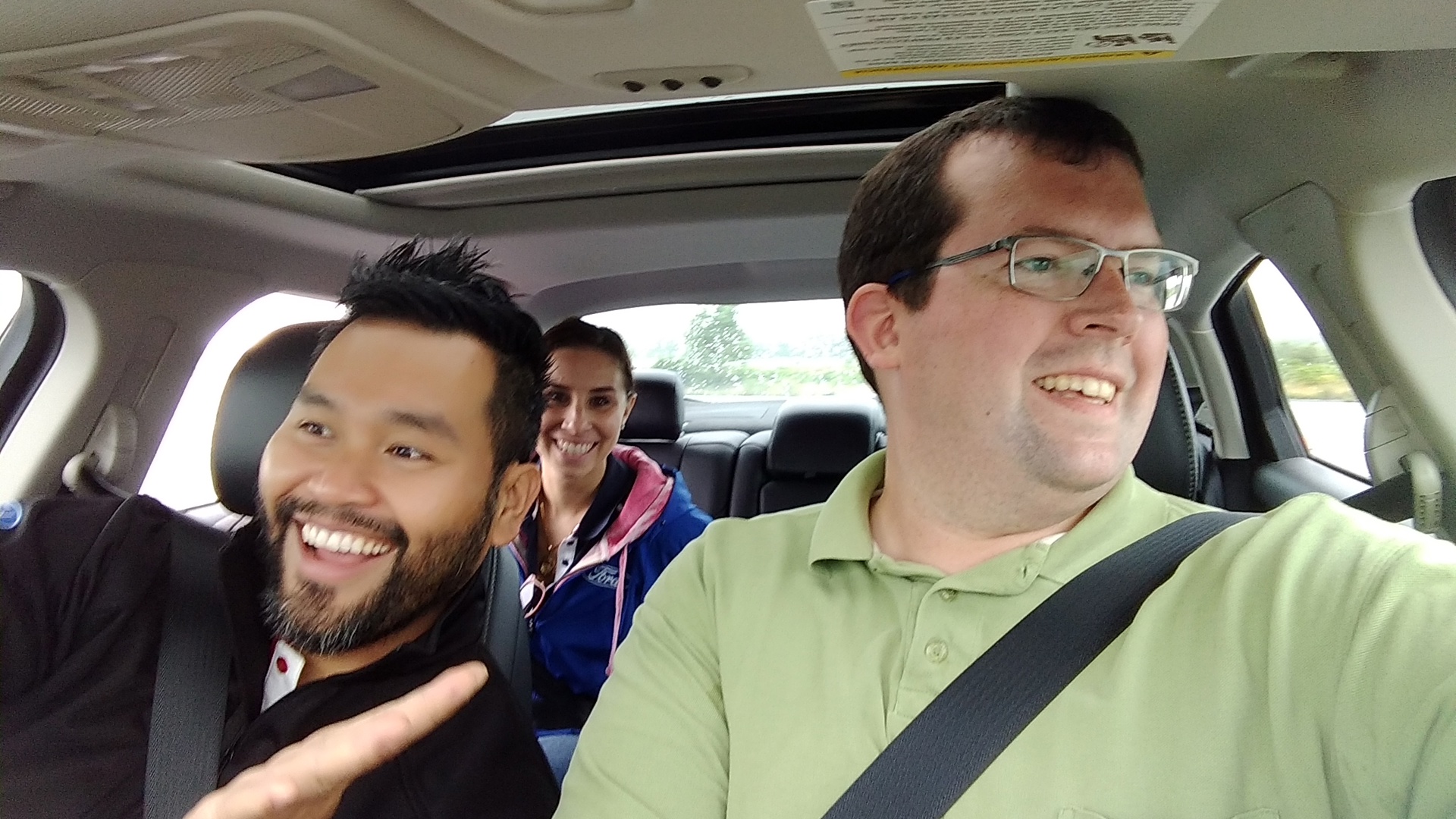
The erratic driving on the course shows just how badly distractions interfere. Crushed cones, smudged lines, and ignored road signs. I might look happy in the selfie I was instructed to take, but what you can’t see is just how far I’ve driven off the road. And that’s without looking at the camera.
So are you going to keep using your phone behind the wheel? The answer is a resounding no. Are you going to be afraid to tell your passengers to quiet down? And if they won’t settle down? “There’s other ways,” said one student. “I’ll make them run behind me. They’ll get some exercise.”
The young drivers taking the course said that they’ve learned just how much of an effect distraction and impairment has on your driving. Parents were impressed by the demonstration too, with some even participating. Jodie Davis said of his newly licensed youngest daughter that “I really hope this drives the message home. She’s just started driving her own car... and kids these days have so much distraction.”
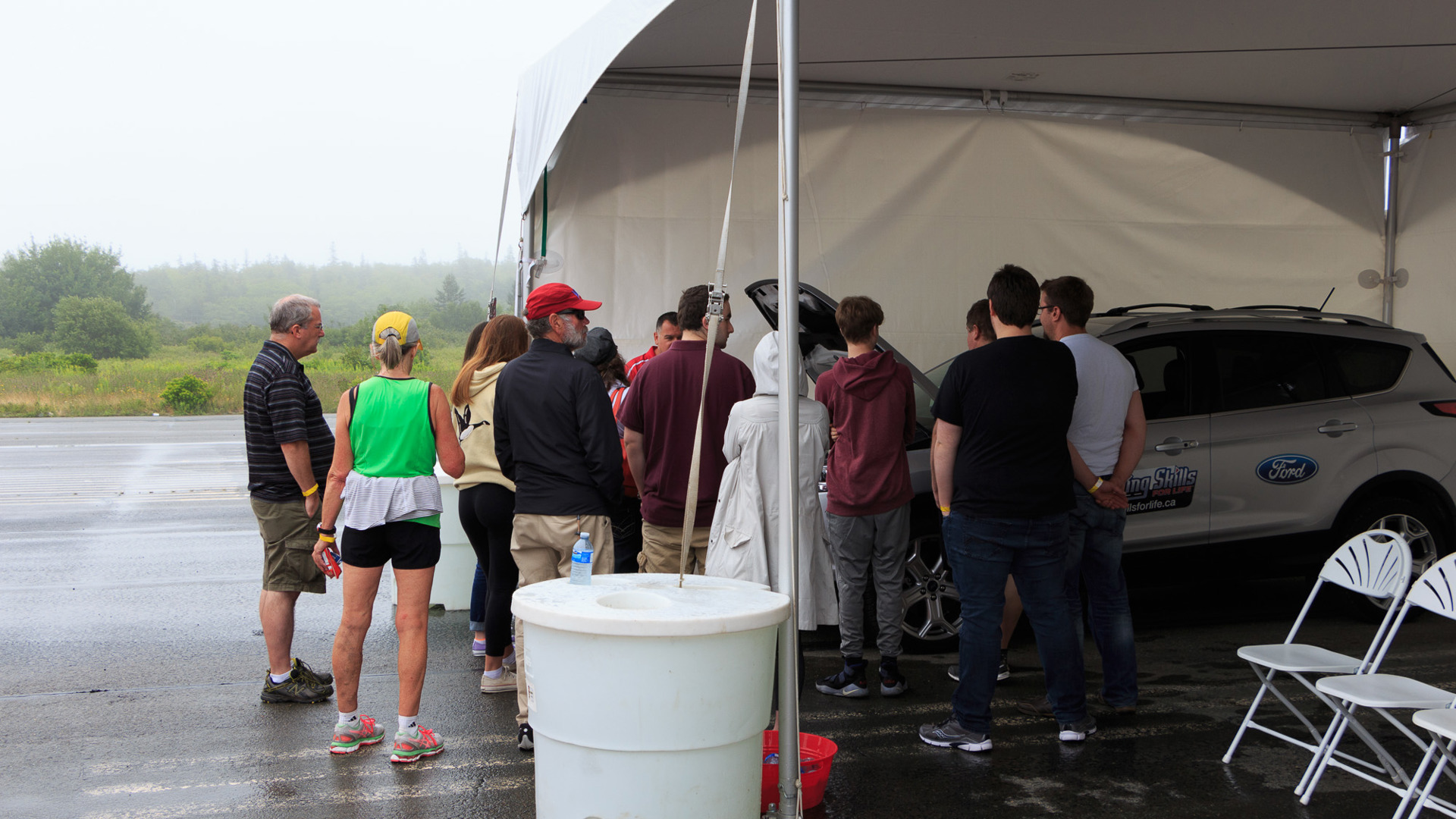
The course also gives young drivers some more hands-on car tips. Things like how to prepare your car for a long drive, checking fluids, and what to do when the dashboard starts lighting up with warning lights while you’re driving.
Dave Drimmie, the lead instructor for the program, said that the main thing he wanted students to take away from the course is this: make proper decisions before getting behind the wheel. It might be leaving your phone on the seat instead of using it, it might be leaving the car at home, calling for a ride instead of getting behind the wheel, or it might be choosing not to take certain passengers.
Ford’s Driving Skills for Life course runs across the country and has open events as well as events held at high schools. While the Halifax course covered just those two essential parts of driving, the class also holds hazard recognition, skid control, and speed management workshops.
